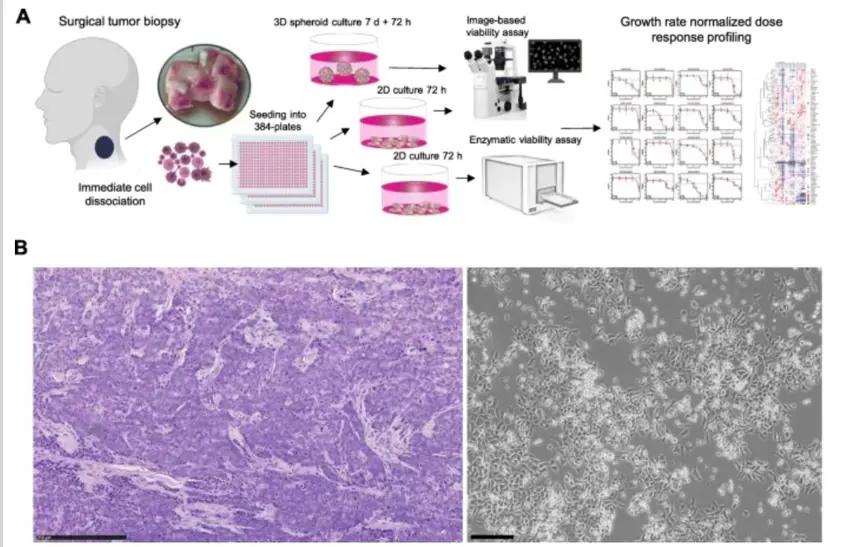Rami Mäkelä, Antti Arjonen, Ville Härmä, Nina Rintanen, Lauri Paasonen, Tobias Paprotka, Kerstin Rönsch, Teijo Kuopio, Juha Kononen & Juha K. Rantala
Abstract
Background
Ex vivo drug screening refers to the out-of-body assessment of drug efficacy in patient derived vital tumor cells. The purpose of these methods is to enable functional testing of patient specific efficacy of anti-cancer therapeutics and personalized treatment strategies. Such approaches could prove powerful especially in context of rare cancers for which demonstration of novel therapies is difficult due to the low numbers of patients. Here, we report comparison of different ex vivo drug screening methods in a metastatic urachal adenocarcinoma, a rare and aggressive non-urothelial bladder malignancy that arises from the remnant embryologic urachus in adults.
Methods
To compare the feasibility and results obtained with alternative ex vivo drug screening techniques, we used three different approaches; enzymatic cell viability assay of 2D cell cultures and image-based cytometry of 2D and 3D cell cultures in parallel. Vital tumor cells isolated from a biopsy obtained in context of a surgical debulking procedure were used for screening of 1160 drugs with the aim to evaluate patterns of efficacy in the urachal cancer cells.
Results
Dose response data from the enzymatic cell viability assay and the image-based assay of 2D cell cultures showed the best consistency. With 3D cell culture conditions, the proliferation rate of the tumor cells was slower and potency of several drugs was reduced even following growth rate normalization of the responses. MEK, mTOR, and MET inhibitors were identified as the most cytotoxic targeted drugs. Secondary validation analyses confirmed the efficacy of these drugs also with the new human urachal adenocarcinoma cell line (MISB18) established from the patient’s tumor.
Conclusions
All the tested ex vivo drug screening methods captured the patient’s tumor cells’ sensitivity to drugs that could be associated with the oncogenic KRASG12V mutation found in the patient’s tumor cells. Specific drug classes however resulted in differential dose response profiles dependent on the used cell culture method indicating that the choice of assay could bias results from ex vivo drug screening assays for selected drug classes.
